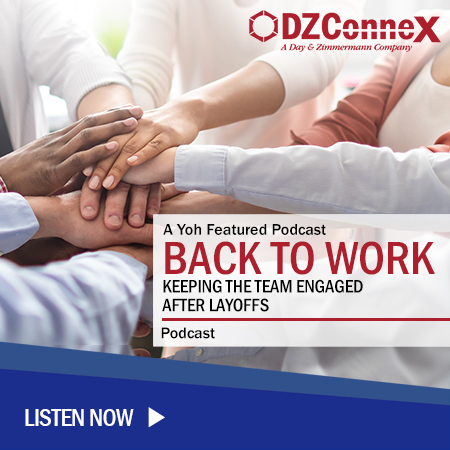As the U.S. economy continues down the unpredictable path it’s been on for the past few years, businesses will also continue to pivot to keep up with the changes. Businesses are directly impacted by the state of the economy, so a volatile economy leads to some difficult decisions for business leaders – especially when it comes to workforce planning.
Workforce planning is the process of strategically aligning your workforce with your business needs right now and in the future, and it’s a vital part of any company’s success. When the economy is in an unpredictable state, many business leaders mistakenly assume that planning for the future is pointless because no one knows what’s to come. However, planning for the future is still necessary during times of economic instability, and it will help your organization stay ahead of the competition.
Should You Hire During Economic Uncertainty?
This is the pressing question most companies ask themselves during times of economic uncertainty. Company leaders will be wondering, “Should I hire more, less, or do nothing?” A recent LinkedIn poll conducted by DZConneX asked viewers how the economy is impacting their workforce planning, and the results were staggered. 32% of respondents said they are implementing a hiring freeze, 34% are practicing a hiring slow-down, 13% are hiring more, and 21% are hiring the same amount as usual.
These results prove that there is no clear path for how organizations should approach talent acquisition right now. Every organization will have unique needs that will be met through a different hiring strategy. But the takeaway is that no matter what, the economy is affecting workforce planning and companies need to adapt to the environment and prioritize building a flexible plan.
Tips for Workforce Planning During Economic Instability
Although each organization’s needs will vary, here are some best practices for successful workforce planning as the economy shifts.
1. Identify Industry Trends
Some industries are impacted more than others by the economy. Make sure you know your industry and how deeply it’s affected by economic turbulence. This is not the first time the economy has been an unpredictable force, so do your research and find out how businesses in your industry have navigated similar situations in the past.
Understanding your market will help you create the best workforce plan to meet your unique needs. And be sure to continuously check to see how your competitors in your industry are navigating the uncertain environment. If they are hiring more people or letting people go, you might want to find out why and see if it would make sense for you to follow suit. In short, always be aware of all internal and external factors that could be impacting your business, and adjust your plan to stay competitive.
2. Reconsider Your Hiring Methods
This could be a good time to reconsider your organization’s hiring methods. Maybe you are outsourcing your hiring and utilizing contingent workers, or you could be handling recruitment in-house. As you take this opportunity to prioritize workforce planning, re-evaluate your current practices to determine which strategy will produce the best results for your organization.
Look into whether or not working with a talent partner would make sense for your company. Especially in times of uncertainty, working with talent experts who can help you determine the best workforce plan moving forward and handle your talent acquisition activities will ease the burden. Consider an RPO or MSP solution, for example, to propel your organization forward and make this volatile time less stressful.
3. Prioritize Your Needs
In tumultuous times, you need to determine what aspects of your organization are most important for success. You will have to decide where your business should invest its money even when the economy is not doing so well and what you can get rid of when you need to be cautious.
Start by deciding which job roles are absolutely vital and which roles could potentially be let go if you need to make some cut-backs. On the other hand, decide what positions you would like to add and hire for when things are going well and you have extra resources. The ultimate goal is to know what you need to do in order to still grow your business amid economic uncertainty.
4. Practice Scenario Planning
Part of your workforce planning process should include scenario planning – a strategy to make flexible plans for the future depending on different scenarios that could occur. Encourage your planning team to think about how the future market could impact your organization, and gather external research about what’s predicted to come.
Based on these assumptions, determine a few contingent plans to implement if the potential scenarios occur. This will ensure your organization is prepared for any sudden changes in the company’s strategy, and it will make the change management process go smoother. This will also help employees accept that they cannot focus on one set-in-stone plan.
5. Be Ready to Pivot
Although workforce planning is necessary, you need to understand that your plans might not be able to come to fruition. Unexpected events will likely pop up at some points, so as a workforce planning leader, you must ensure your organization is ready to alter the plan at a moment’s notice.
If you are stuck in your ways and fail to change with the market, your business will not survive these uncertain economic conditions. For example, the economy might be in a great position and your business thriving in Q1, and the opposite could occur in Q2 due to factors outside of your control. This would mean that your organization would need to be ready to hire more people during Q1 and quickly implement a hiring freeze in Q2. That’s why preparing your workforce for pivoting is essential to the success of your workforce plans.
When navigating uncertainty, it's most important to be there for your team and guide them through the uncertainty with a workforce plan. Always be transparent with your teams so they know what's happening at any given time. As long as your organization has a plan and understands that they need to expect the unexpected, you can thrive in a volatile environment.



%20Size%20Photos/Light%20business%20meeting.jpg)



